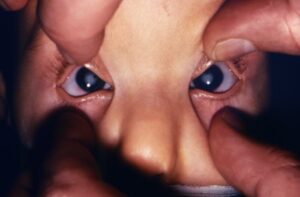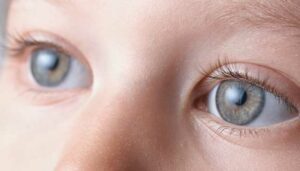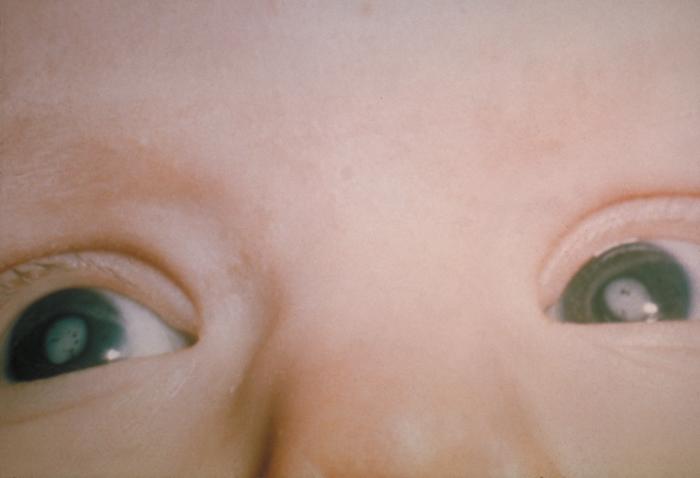Rubella cataracts are a relatively rare eye condition that is caused by the rubella virus. It can lead to vision loss and blindness if it is not treated. In this blog post, we will discuss the symptoms of rubella cataract, how it is treated, and what you can do to prevent it.
What Is Rubella Cataract?
 Rubella cataract is a type of cataract that is caused by the rubella virus. The rubella virus is a member of the paramyxovirus family and is closely related to the measles virus. Rubella cataracts are most commonly seen in children who are infected with the rubella virus, but they can also occur in adults.
Rubella cataract is a type of cataract that is caused by the rubella virus. The rubella virus is a member of the paramyxovirus family and is closely related to the measles virus. Rubella cataracts are most commonly seen in children who are infected with the rubella virus, but they can also occur in adults.
This type of cataract is characterized by the formation of small, white spots on the lens of the eye. These spots eventually grow and coalesce to form a cloudy area that can obscure vision. Rubella cataracts are usually bilateral, meaning they affect both eyes. However, they can also be unilateral, affecting only one eye.
It is believed that rubella cataracts develop when the virus infects the lens of the eye. The virus is thought to cause damage to the cells of the lens, which leads to the formation of small white spots. Over time, these spots grow and coalesce to form a cloudy area.
There is no specific treatment for rubella cataracts but you can improve your vision with surgery. And for more treatment options, you can contact a professional doctor.
How To Identify It?
It might be difficult to identify rubella cataract in its early stages as the symptoms can be quite subtle. However, some common signs to look out for include:
Blurry vision
This is usually the first symptom that appears and is usually noticed by parents when their child begins to struggle with reading or other close-up tasks. It might also be more difficult for them to see in dim lighting.
A whitish film over the pupil
As the cataract develops, it may start to look like there is a white film over the pupil. This can make vision even more blurred. For example, a person with a rubella cataract may have trouble seeing at night. The cataract may also make colors appear less bright. As the cataract grows, it may cover more of the pupil.
Poor vision in bright lights
It is one of the most well-known symptoms of rubella cataract. People with this condition may have difficulty seeing bright lights or glare. This can make driving and other activities that require good vision more difficult.
Inflammation
This is the most common symptom that people experience with rubella. It can lead to a rash and fever, and in some cases, conjunctivitis. If you experience these symptoms, it’s important to see a doctor right away.
So these are some common signs and symptoms of rubella. If you experience any of these, it’s important to see a doctor as soon as possible. Early treatment is key to preventing serious complications from this disease.
What Causes Rubella Cataracts?
 Well, this particular type of cataract is most often caused by the rubella virus. This is the same virus that causes German measles, and it can cause a number of problems if a pregnant woman contracts it.
Well, this particular type of cataract is most often caused by the rubella virus. This is the same virus that causes German measles, and it can cause a number of problems if a pregnant woman contracts it.
So, all in all, the common cause of this cataract is the rubella virus. But how does the virus actually lead to cataracts?
Well, it turns out that the virus can cause inflammation in the eye, and this can damage the lens of the eye. The lens is the clear part of the eye that helps focus light, and when it’s damaged, it can become cloudy.
This cloudiness is what we call a cataract. And in most cases, it will eventually lead to blindness if it’s not treated. Fortunately, though, rubella cataracts are usually treatable with surgery. Other risk factors for this cataract include diabetes and certain genetic disorders.
So, there you have it. That’s everything you need to know about rubella cataracts. If you or your child has this condition, be sure to get treatment as soon as possible to avoid any complications.
Does Rubella Cause Congenital Cataracts?
This is a common question that people ask, and unfortunately, there is no definitive answer. While the connection between rubella and congenital cataracts is well-established, the actual cause of this condition is unknown.
This congenital rubella syndrome can lead to all sorts of birth defects, including heart problems, deafness, and mental retardation. But even if a pregnant woman doesn’t contract the virus, her unborn child can still be affected.
That’s because the rubella virus can cross the placenta and infect the developing fetus. And one of the possible complications is rubella cataracts. In fact, this is the most common type of cataract in children.
Congenital cataracts are described as opacities, or cloudy areas, in the lens of the eye. These opacities can range from mild to severe and can cause vision problems. People with rubella cataracts often have trouble with their vision from birth, and may eventually need surgery to correct the problem.
If you or your child has been diagnosed with a rubella cataract, it is important to see an eye doctor regularly. There is no cure for this condition, but early detection and treatment can help prevent its progression and preserve vision.
Complications With Rubella Cataract
 There are several possible complications that can occur as a result of rubella cataracts. These include:
There are several possible complications that can occur as a result of rubella cataracts. These include:
- Glaucoma: This is a condition in which the pressure inside the eye becomes too high, damaging the optic nerve. If left untreated, glaucoma can lead to blindness.
- Corneal ulcers: These are open sores on the surface of the eye that can become infected. If not treated promptly, corneal ulcers can lead to vision loss.
- Retinal detachment: This is a serious condition in which the retina becomes separated from the back of the eye. Retinal detachment can cause permanent vision loss if not treated immediately.
The risks and complications with rubella cataracts can be serious, so it’s important to see an eye doctor if you think you or your child may have this condition. Early diagnosis and treatment are key to preventing vision loss from rubella cataracts.
Because rubella cataracts are a virus-related condition, there is no specific cure. However, treatment can help to improve vision and prevent complications. So do not delay the treatment and see an eye doctor as soon as possible.
How To Diagnose It?
A diagnosis of rubella cataract can be made by a medical professional during a routine eye examination. An ophthalmologist will look for the presence of white spots on the iris, which is the colored part of the eye. These spots are called Köhler disease and are an early sign of rubella cataract.
A diagnosis can also be made based on the results of a vision test. If you have a rubella cataract, your vision will be significantly reduced. Some common tests to diagnose a rubella cataract include the Amsler grid test and the Snellen chart test.
The only way to definitively diagnose a rubella cataract is through a biopsy of the eye. This involves taking a small sample of tissue from the affected eye and sending it to a laboratory for analysis.
Overall, an accurate is necessary to ensure that you receive the appropriate treatment. If you have any concerns about your vision, be sure to speak to your doctor.
How To Treat It?
There are a few different ways to treat rubella cataracts. Let’s discuss a few of the most common methods.
- One way to treat rubella cataracts is through surgery. This involves removing the cloudy lens and replacing it with a clear one. Surgery is usually successful in restoring vision. It works best when the cataract is small.
- Another way to treat rubella cataracts is through a process called laser therapy. This involves using a laser to break up the cloudy lens so that it can be removed more easily. Laser therapy is usually successful in restoring vision. This process takes place over a series of treatments.
- A third way to treat rubella cataracts is through a process called radiation therapy. This involves using high-energy waves to break up the cloudy lens so that it can be removed more easily. Radiation therapy is usually successful in restoring vision but may take longer than laser therapy.
- Another way to treat rubella cataracts is with corticosteroids. These are drugs that can help reduce inflammation and swelling. They may be given as eye drops or taken orally.
- Lastly, some people with rubella cataracts may benefit from wearing contact lenses or glasses. This can help improve vision by correcting the refractive error.
These are some common treatment options for rubella cataracts. Talk to your doctor to see if one of these options is right for you. Sometimes a combination of these treatments may be necessary to achieve the best results.
Rubella cataracts can be a serious condition but there are treatment options available. If you or someone you know has this condition, don’t hesitate to seek medical help. With proper treatment, vision can be restored and the condition controlled.
Conclusion
To conclude, rubella cataracts are a preventable cause of blindness and can be avoided by getting the MMR vaccine. If you or your child has rubella, it is important to see an ophthalmologist right away so that treatment can be started as soon as possible. With early diagnosis and treatment, vision loss from rubella cataracts can be prevented.
Moreover, if you are pregnant, it is essential to get vaccinated against rubella to protect your unborn child from this devastating disease. So, do not delay or hesitate to ask for professional help and guidance.
And if you have any questions, please don’t hesitate to reach out to Eye Mantra. At EyeMantra we have a team of experienced eye surgeons, who will be happy to answer your any questions on cataract surgery, cataract surgery cost, cataract lens cost for different cataract surgery types- Phacoemulsification, MICS & Femto Laser Cataract. Call us at +91-9711116605 or email at eyemantra1@gmail.com for inquiries.


